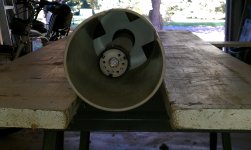A month or so ago I asked on several forums whether anyone had used any of the horse waterers I found online that didn't require electricity. I didn't get any feedback, and after researching things decided on the following product called the Drinking Post Waterer and ordered two of them:
Drinking post
I've documented below how the installation went. My motivation for this project was the rising cost of heating a water trough in the winter. Last year I measured the consumption and it was just over $50 per month during the coldest months (Chicago climate). We use a 1500W submerged heater.
Drinking Post was the only company that I got a response from when I requested information, they also spent a lot of time with me on the phone convincing me why it would work in our climate. They gave me the name of a customer to call and talk to, which I did. I told them I couldn't find any online experiences of people who used their product and told them if they'd give me a discount on a purchase, I'd document how things went for me, be it good or bad. The units cost $480 each, plus $50 shipping. They agreed to pay the shipping on two units (total $100) if I'd agree to document how things went. Here's my end of the bargain.
The units arrived 3 days after I placed the order and were well packaged (photo 1).
The external part of the unit is ~1/4" wall PVC, the internal components look well made, metal parts are stainless, everything else is some kind of plastic or PVC (photos 2,3). Excavation is a lot of work, the bottom of the unit has to be approximately 2' below the frost line, and it sits on a 10" deep gravel bed that acts as the dry well for the water that drains back. Our frostline is 42" so the bottom of the unit is located at about 66", and the trench was about 76" deep. I used #6 washed rock on the bottom for the drain. Instructions call for covering the rock with tar paper. I found that hard to work with and used a couple layers of geotex landscape fabric instead since I had it laying around (photo 8). My water supply was a 1" PE plastic line (photo 4), I used barbed fittings to adapt to the 3/4" plastic pipe fitting on the bottom of the unit (photo 3). I learned one thing about plastic insertion fittings: you're supposed to use 2 hose clamps oriented 180deg from each other for each connection. I turned on the water and let it sit overnight before assembly to test for leaks. There is a heavy plastic receiver dish in the bottom of the trench that connects to the water source, the 8' long drinking mechanism threads onto a fitting in that dish (photos 5,6). Since it's plastic threads, if you ever have to take it apart you can remove it from above ground, do any repairs, and then thread it back on. I used Oatey plastic thread seal on all the plastic parts. It's non-hardening and non-lubricating, and safe for plastic. Another thing I learned is not to use teflon products on plastic, they lead to overstressing the material because it's too easy to turn. Since I was doing all this I also installed a frostproof yard hydrant. Next step was backfilling (photo 7). Our soil is mostly rock and sand, you can see some of the really large rocks in the photos. I used the big rocks around our firepit (photo 10), only put the smaller stuff back in the hole. End up with about 30" of the post exposed above ground (photo 9). I made one mistake in not having limestone screenings on hand to put on top of the backfill because we had several days of rain right after the install, so the horses couldn't get near the drinkers or they'd sink in the mud. Once I got that fixed the training began. Neither horse had any trouble pushing down on the flap to activate the water flow, but one of our horses is really spooky and the sound of the water displacing the air as it comes up the tube scared her, so she jumped back and didn't hang around to drink. She's also kind of mouthy and bites on the plastic paddle. My wife does clicker training with our critters, so she's working with the horse to get her adjusted to the sound. I talked to the company and they have a few different style paddles, one for training and one for horses that chew. They're going to send me one of those to see if it helps. Overall my experience so far is positive. I'll post again after the freezing weather takes hold, I look forward to not paying for electricity. My wife likes these because the horses get clean water each time, it's always the same temp, and she doesn't have to clean out the troughs.
Drinking post
I've documented below how the installation went. My motivation for this project was the rising cost of heating a water trough in the winter. Last year I measured the consumption and it was just over $50 per month during the coldest months (Chicago climate). We use a 1500W submerged heater.
Drinking Post was the only company that I got a response from when I requested information, they also spent a lot of time with me on the phone convincing me why it would work in our climate. They gave me the name of a customer to call and talk to, which I did. I told them I couldn't find any online experiences of people who used their product and told them if they'd give me a discount on a purchase, I'd document how things went for me, be it good or bad. The units cost $480 each, plus $50 shipping. They agreed to pay the shipping on two units (total $100) if I'd agree to document how things went. Here's my end of the bargain.
The units arrived 3 days after I placed the order and were well packaged (photo 1).
The external part of the unit is ~1/4" wall PVC, the internal components look well made, metal parts are stainless, everything else is some kind of plastic or PVC (photos 2,3). Excavation is a lot of work, the bottom of the unit has to be approximately 2' below the frost line, and it sits on a 10" deep gravel bed that acts as the dry well for the water that drains back. Our frostline is 42" so the bottom of the unit is located at about 66", and the trench was about 76" deep. I used #6 washed rock on the bottom for the drain. Instructions call for covering the rock with tar paper. I found that hard to work with and used a couple layers of geotex landscape fabric instead since I had it laying around (photo 8). My water supply was a 1" PE plastic line (photo 4), I used barbed fittings to adapt to the 3/4" plastic pipe fitting on the bottom of the unit (photo 3). I learned one thing about plastic insertion fittings: you're supposed to use 2 hose clamps oriented 180deg from each other for each connection. I turned on the water and let it sit overnight before assembly to test for leaks. There is a heavy plastic receiver dish in the bottom of the trench that connects to the water source, the 8' long drinking mechanism threads onto a fitting in that dish (photos 5,6). Since it's plastic threads, if you ever have to take it apart you can remove it from above ground, do any repairs, and then thread it back on. I used Oatey plastic thread seal on all the plastic parts. It's non-hardening and non-lubricating, and safe for plastic. Another thing I learned is not to use teflon products on plastic, they lead to overstressing the material because it's too easy to turn. Since I was doing all this I also installed a frostproof yard hydrant. Next step was backfilling (photo 7). Our soil is mostly rock and sand, you can see some of the really large rocks in the photos. I used the big rocks around our firepit (photo 10), only put the smaller stuff back in the hole. End up with about 30" of the post exposed above ground (photo 9). I made one mistake in not having limestone screenings on hand to put on top of the backfill because we had several days of rain right after the install, so the horses couldn't get near the drinkers or they'd sink in the mud. Once I got that fixed the training began. Neither horse had any trouble pushing down on the flap to activate the water flow, but one of our horses is really spooky and the sound of the water displacing the air as it comes up the tube scared her, so she jumped back and didn't hang around to drink. She's also kind of mouthy and bites on the plastic paddle. My wife does clicker training with our critters, so she's working with the horse to get her adjusted to the sound. I talked to the company and they have a few different style paddles, one for training and one for horses that chew. They're going to send me one of those to see if it helps. Overall my experience so far is positive. I'll post again after the freezing weather takes hold, I look forward to not paying for electricity. My wife likes these because the horses get clean water each time, it's always the same temp, and she doesn't have to clean out the troughs.
Attachments
-
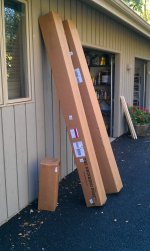 Horse Drinking Fountain 001.jpg636.1 KB · Views: 462
Horse Drinking Fountain 001.jpg636.1 KB · Views: 462 -
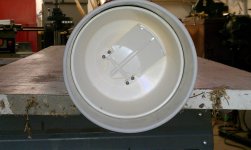 Horse Drinking Fountain 004.jpg442.5 KB · Views: 433
Horse Drinking Fountain 004.jpg442.5 KB · Views: 433 -
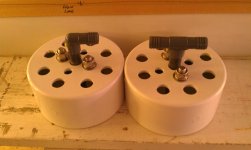 Horse Drinking Fountain 007.jpg586 KB · Views: 431
Horse Drinking Fountain 007.jpg586 KB · Views: 431 -
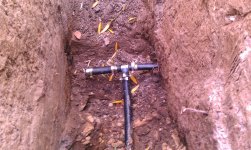 Horse Drinking Fountain 018.jpg879.7 KB · Views: 510
Horse Drinking Fountain 018.jpg879.7 KB · Views: 510 -
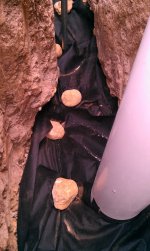 Horse Drinking Fountain 022.jpg809.5 KB · Views: 444
Horse Drinking Fountain 022.jpg809.5 KB · Views: 444 -
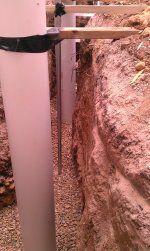 Horse Drinking Fountain 021.jpg812.9 KB · Views: 490
Horse Drinking Fountain 021.jpg812.9 KB · Views: 490 -
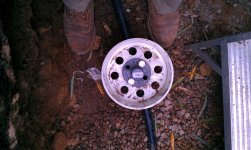 Horse Drinking Fountain 020.jpg862.6 KB · Views: 467
Horse Drinking Fountain 020.jpg862.6 KB · Views: 467 -
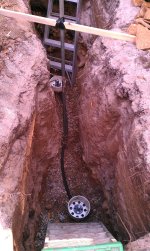 Horse Drinking Fountain 015.jpg965.1 KB · Views: 543
Horse Drinking Fountain 015.jpg965.1 KB · Views: 543 -
 Horse Drinking Fountain.jpg774.1 KB · Views: 685
Horse Drinking Fountain.jpg774.1 KB · Views: 685 -
 Horse Drinking Fountain 023.jpg1 MB · Views: 727
Horse Drinking Fountain 023.jpg1 MB · Views: 727
